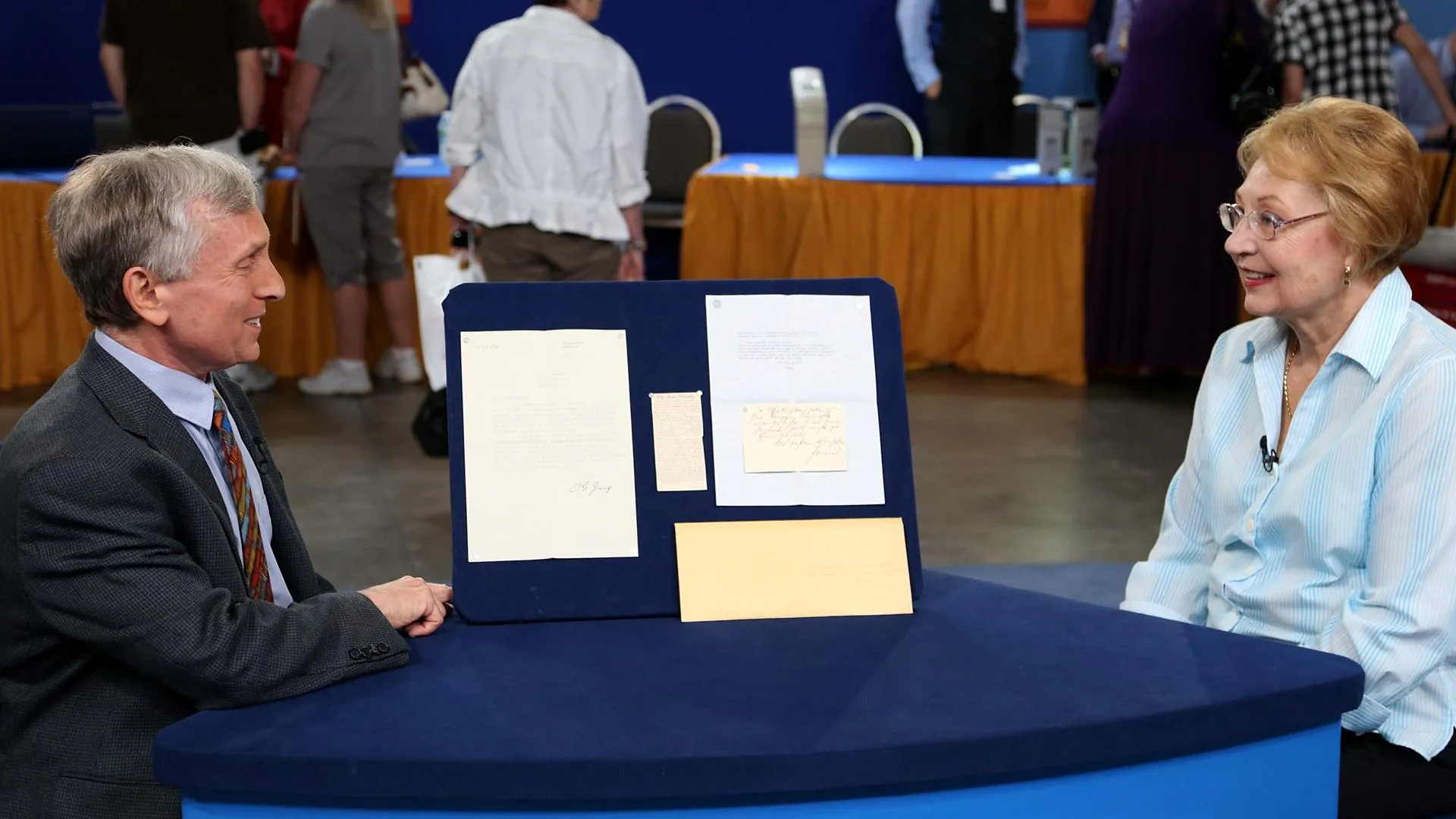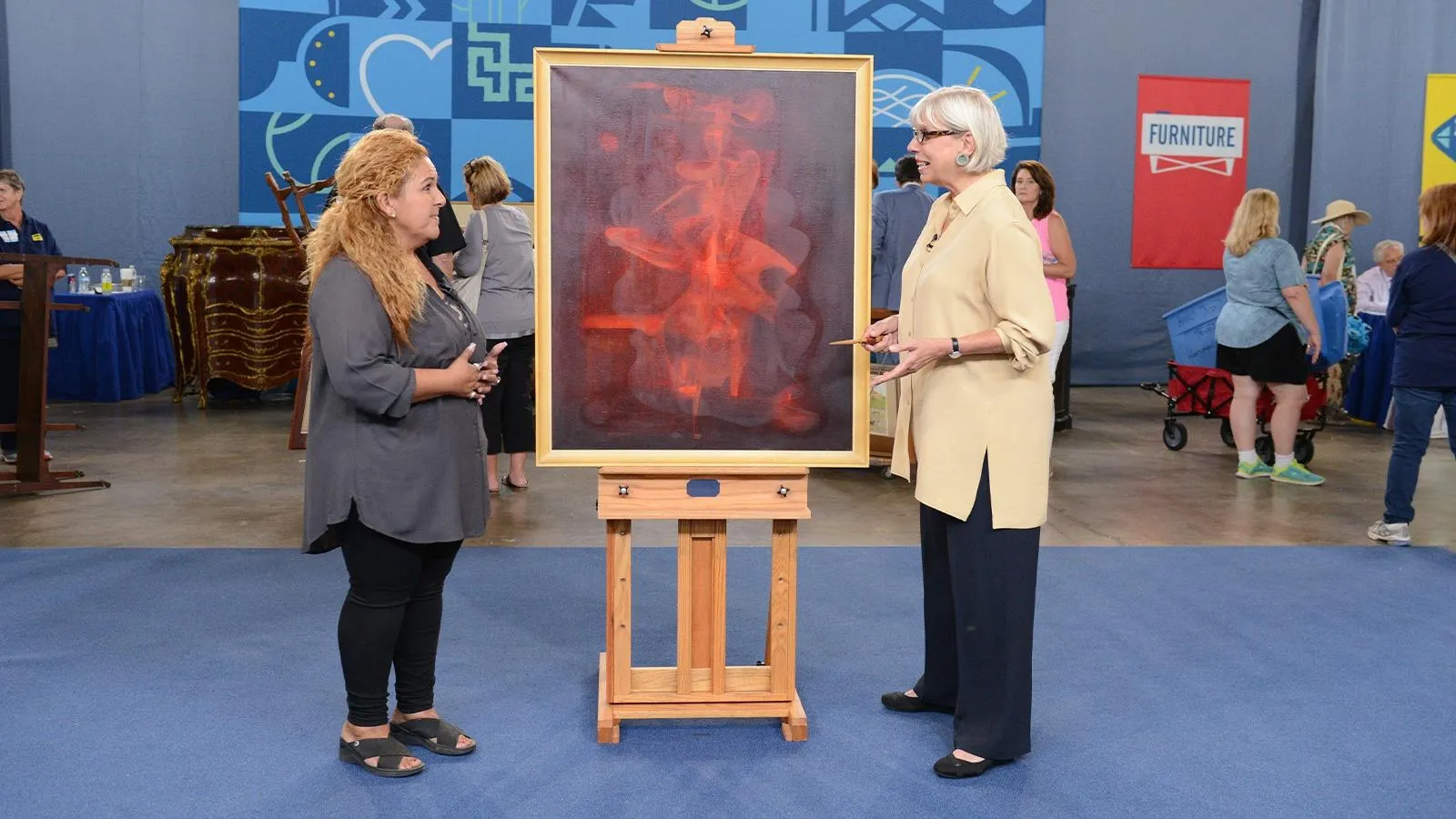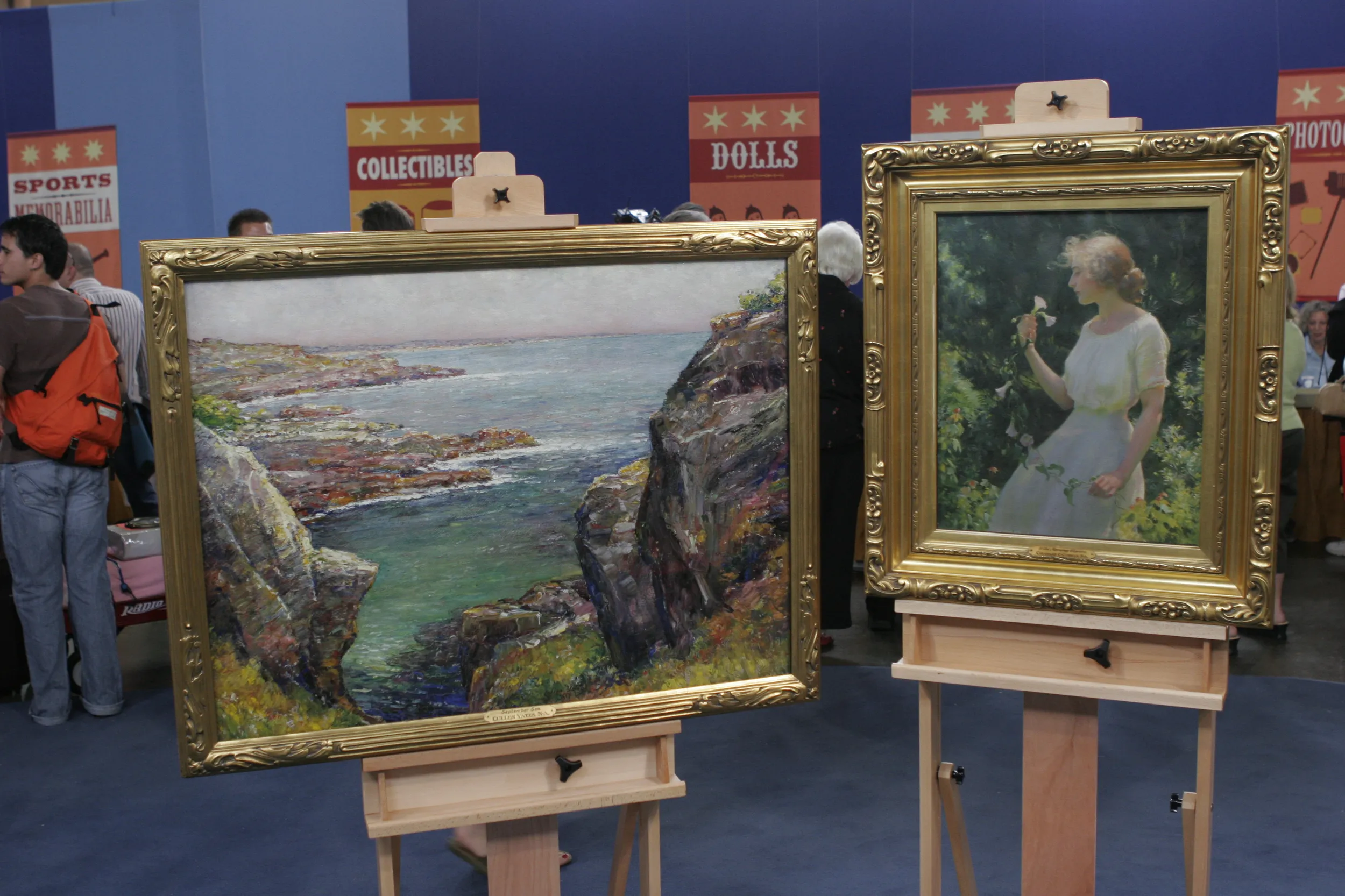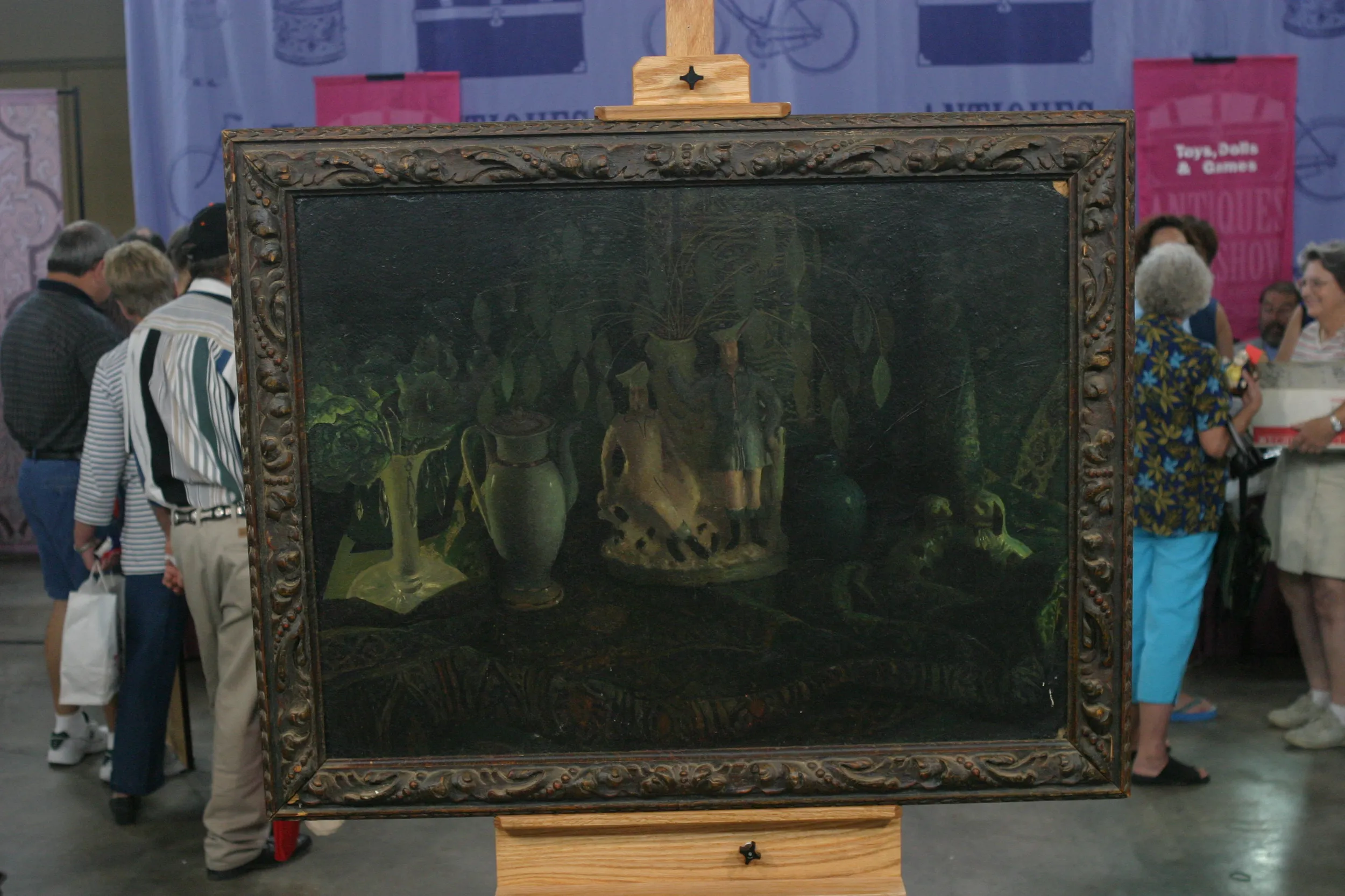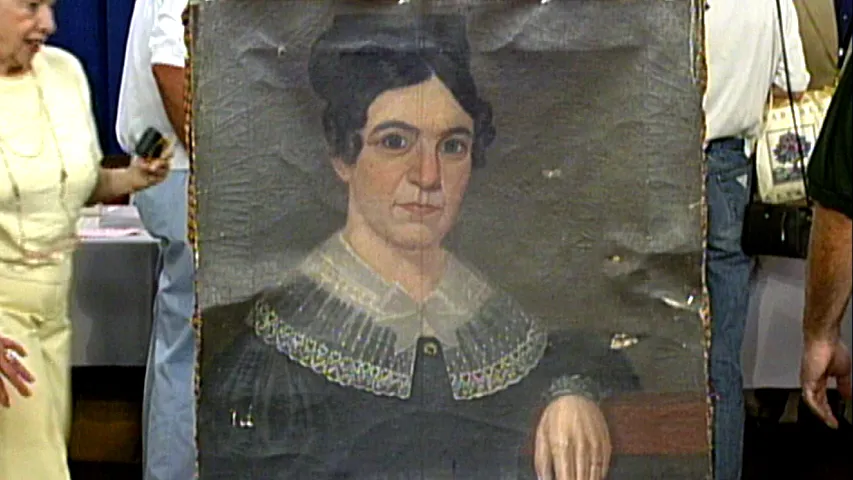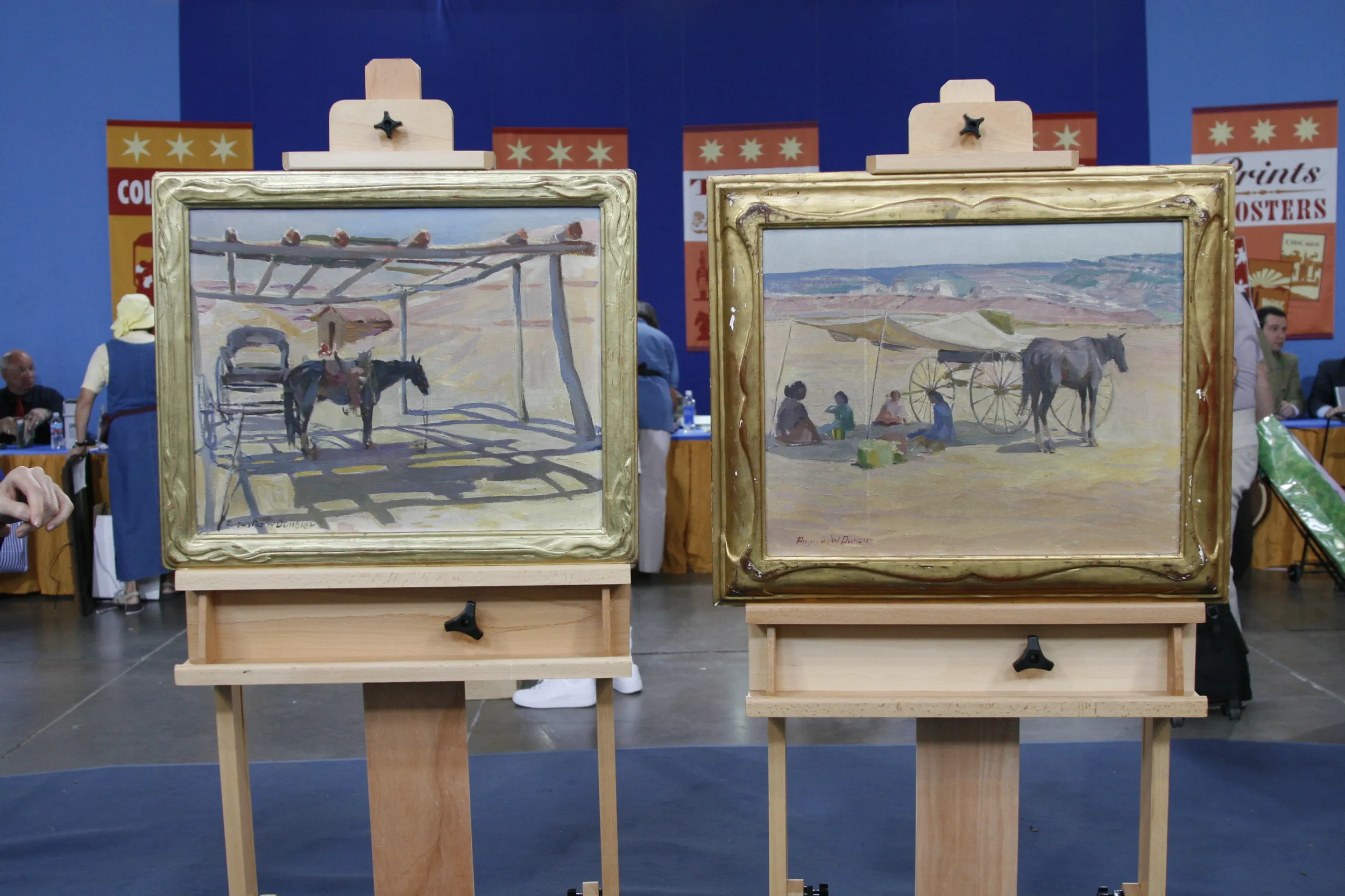GUEST: It is signed-- I'm not familiar with the artist myself, but it is dated '53. I'm sure you know much more than I do.
APPRAISER: I'm hoping so-- hopefully I'll be able to tell you a little bit about it. It's signed down here. And it's K. Nunamaker, and that's Kenneth Nunamaker. Have you done any research on him at all?
GUEST: He is from Pennsylvania and he sold most of his work, I believe, there. But other than that, I don't know much about him.
APPRAISER: Technically, he wasn't from Pennsylvania. He was actually from Ohio. He was essentially pretty much a, a self-taught artist. Around about 1923, or prior to that, he moved to Philadelphia, and then in 1923, he moved to Center Bridge, which was in Bucks County. Sometimes his group is called the Bucks County Impressionists, the New Hope School, or the Pennsylvania Impressionists. He is indeed one of those. One of his great mentors was Edward Redfield. And Redfield was one of the leaders of the Pennsylvania Impressionist school, together with Daniel Garber. And I think of all the Impressionists, Nunamaker was perhaps influenced by Redfield more than any of the others, and you can see it in his very vigorous brushwork. He would paint en plein air, i.e., he would go outside to paint. So what you see here, he would have been sitting in front of this with his little canvas board. Can you tell me a little bit about how you came by it?
GUEST: We were in the upper part of Michigan, outside of West Branch, Michigan, and we stopped at a garage sale and picked it up for two dollars. It just struck us as a very nice oil painting. I think you've got a good eye. Let's just turn it around for a moment. And here we can see the artist's stamp, K. Nunamaker, New Hope, Pennsylvania. And then Center Bridge, where he lived. And then here we see written "Bill's Place," which is the title of the painting. And that looks to be $75?
GUEST: Looks to be $75.
APPRAISER: $75. So that's presumably what he was selling it for at that time. You bought it for two dollars, which, you would expect to buy maybe a postcard or something like that, for two dollars. (chuckles) But you have the original oil painting here.
GUEST: Yes.
APPRAISER: Have you ever wondered what it might be worth?
GUEST: We kind of wondered what it was worth. My husband thought maybe $200, but really, I'm not sure.
APPRAISER: He appears rather less frequently in the market than some of the other Pennsylvania Impressionist artists. So when he does appear, there tends to be quite a lot of demand for his work. And I would expect a piece like this probably to fetch in the $6,000 to $10,000 range at auction.
GUEST: $6,000 to $10,000?
APPRAISER: Yeah.
GUEST: Oh, wow. Never would I have thought that.
APPRAISER: It's a, it's a bit of a jump from two dollars.
GUEST: Wow, it definitely is.
APPRAISER: And a... And a little higher of your, than your husband's expectation of $200, so...
GUEST: Most definitely.
APPRAISER: Yeah.
GUEST: Yeah, wow, that is great.
APPRAISER: Interestingly enough, I noticed that there was another painting called "Bill's Place" that sold in 2011. So it's another version of this, but taken from a different perspective. Okay. And, but quite a bit bigger, and that sold for about $25,000.
GUEST: Wow. I like the little one-- it's very nice.
APPRAISER: Next time you go bargain hunting, I think I'll come with you. (laughs)
GUEST: You're more than welcome to come with us.
APPRAISER: Thank you. (both laugh)

